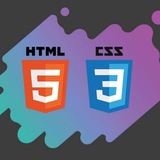#SEO
Search engine optimization is the process of improving the quality and quantity of website traffic to a website or a web page from search engines. SEO targets unpaid traffic rather than direct traffic or paid traffic.
@SilentLesson
Search engine optimization is the process of improving the quality and quantity of website traffic to a website or a web page from search engines. SEO targets unpaid traffic rather than direct traffic or paid traffic.
@SilentLesson
1. <!DOCTYPE html>
You'll need this tag at the beginning of every HTML document you create. It ensures that a browser knows that it's reading HTML, and that it expects HTML5, the latest version.
You'll need this tag at the beginning of every HTML document you create. It ensures that a browser knows that it's reading HTML, and that it expects HTML5, the latest version.
2. <html>
This is another tag that tells a browser that it's reading HTML. The <html> tag goes straight after the DOCTYPE tag, and you close it with a
</html> tag right at the end of your file. Everything else in your document goes between these tags.
This is another tag that tells a browser that it's reading HTML. The <html> tag goes straight after the DOCTYPE tag, and you close it with a
</html> tag right at the end of your file. Everything else in your document goes between these tags.
3. <head>
The <head> tag starts the header section of your file. The stuff that goes in here doesn't appear on your webpage. Instead, it contains metadata for search engines, and info for your browser.
The <head> tag starts the header section of your file. The stuff that goes in here doesn't appear on your webpage. Instead, it contains metadata for search engines, and info for your browser.
5. <meta>
Like the title tag, metadata is put in the header area of your page. Metadata is primarily used by search engines, and is information about what's on your page. There are a number of different meta fields, but these are some of the most commonly used:
description---A basic description of your page.keywords---A selection of keywords applicable to your page.author---The author of your page.viewport---A tag for ensuring that your page looks good on all devices.
Like the title tag, metadata is put in the header area of your page. Metadata is primarily used by search engines, and is information about what's on your page. There are a number of different meta fields, but these are some of the most commonly used:
description---A basic description of your page.keywords---A selection of keywords applicable to your page.author---The author of your page.viewport---A tag for ensuring that your page looks good on all devices.
7. <h1>
The <h1> tag defines a level-one header on your page. This will usually be the title, and there will ideally only be one on each page.
<h2> defines level-two headers such as section headers, <h3> level-three sub-headers, and so on, down to <h6>. As an example, the names of the tags in this article are level-two headers.
The <h1> tag defines a level-one header on your page. This will usually be the title, and there will ideally only be one on each page.
<h2> defines level-two headers such as section headers, <h3> level-three sub-headers, and so on, down to <h6>. As an example, the names of the tags in this article are level-two headers.
